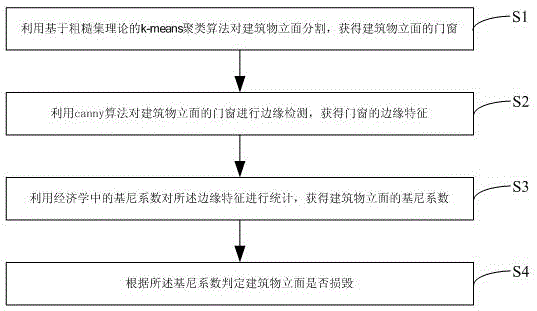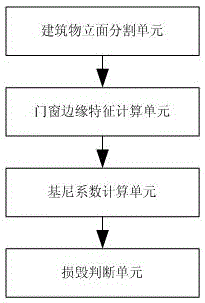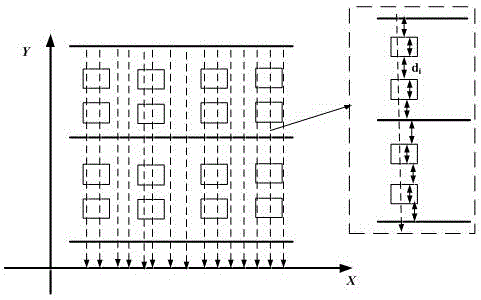Method and apparatus for building facade damage detection in oblique aerial image
A technology for aerial images and buildings, applied in image analysis, image enhancement, image data processing, etc., can solve the problems of difficult acquisition of oblique aerial images, difficult acquisition, and high-precision registration, so as to reduce complexity and improve automation Degree and precision, the effect of saving production costs
- Summary
- Abstract
- Description
- Claims
- Application Information
AI Technical Summary
Problems solved by technology
Method used
Image
Examples
Embodiment 1
[0054] figure 1 It is a flowchart of a method for detecting damage to a building facade in an oblique aerial image provided by a specific embodiment of the present invention. Such as figure 1 As shown, the method for detecting damage to the facade of a building in an oblique aerial image of the present invention includes:
[0055] Step 1: Use the k-means clustering algorithm based on rough set theory to segment the building facade to obtain the doors and windows of the building facade;
[0056] Step 2: Use the canny algorithm to perform edge detection on the doors and windows of the building facade to obtain the edge features of the doors and windows;
[0057] Step 3: Use the Gini coefficient in economics to perform statistics on the edge features to obtain the Gini coefficient of the building facade;
[0058] Step 4: Determine whether the building facade is damaged according to the Gini coefficient.
[0059] The present invention proposes a method for detecting building facade damage ...
Embodiment 2
[0088] This embodiment 2 is a device embodiment, and embodiment 1 is a method embodiment. The device embodiment and the method embodiment belong to the same technical concept. For the content not described in detail in the device embodiment, please refer to the method embodiment.
[0089] figure 2 It is a schematic structural diagram of a device for detecting damage to a building facade in an oblique aerial image provided by a specific embodiment of the present invention. Such as figure 2 As shown, the device for detecting damage to the facade of a building in an oblique aerial image of the present invention includes:
[0090] The building facade segmentation unit is used to segment the building facade by using the k-means clustering algorithm based on rough set theory to obtain the doors and windows of the building facade;
[0091] The door and window edge feature calculation unit is used to use the canny algorithm to perform edge detection on the doors and windows of the building...
PUM
 Login to View More
Login to View More Abstract
Description
Claims
Application Information
 Login to View More
Login to View More - R&D
- Intellectual Property
- Life Sciences
- Materials
- Tech Scout
- Unparalleled Data Quality
- Higher Quality Content
- 60% Fewer Hallucinations
Browse by: Latest US Patents, China's latest patents, Technical Efficacy Thesaurus, Application Domain, Technology Topic, Popular Technical Reports.
© 2025 PatSnap. All rights reserved.Legal|Privacy policy|Modern Slavery Act Transparency Statement|Sitemap|About US| Contact US: help@patsnap.com



